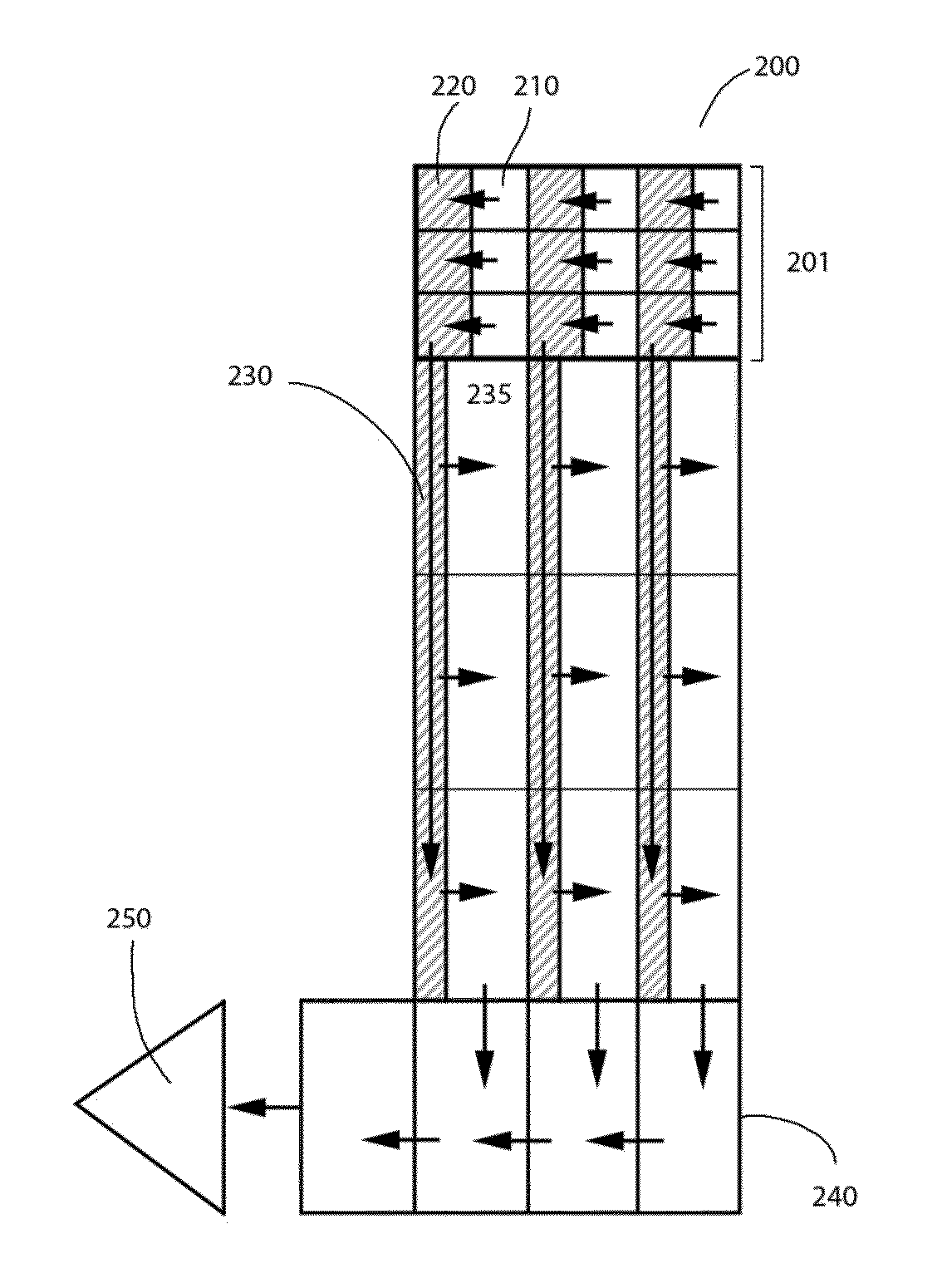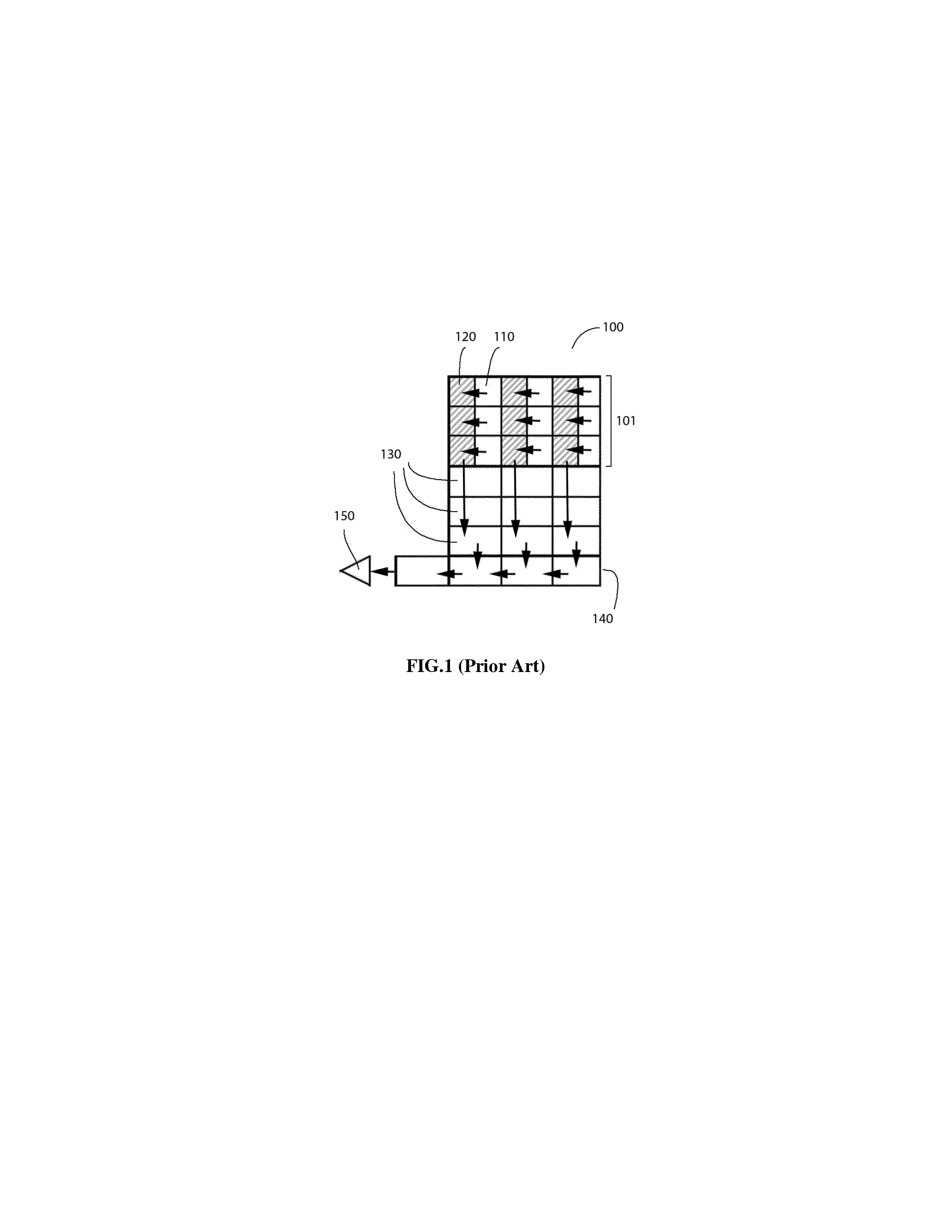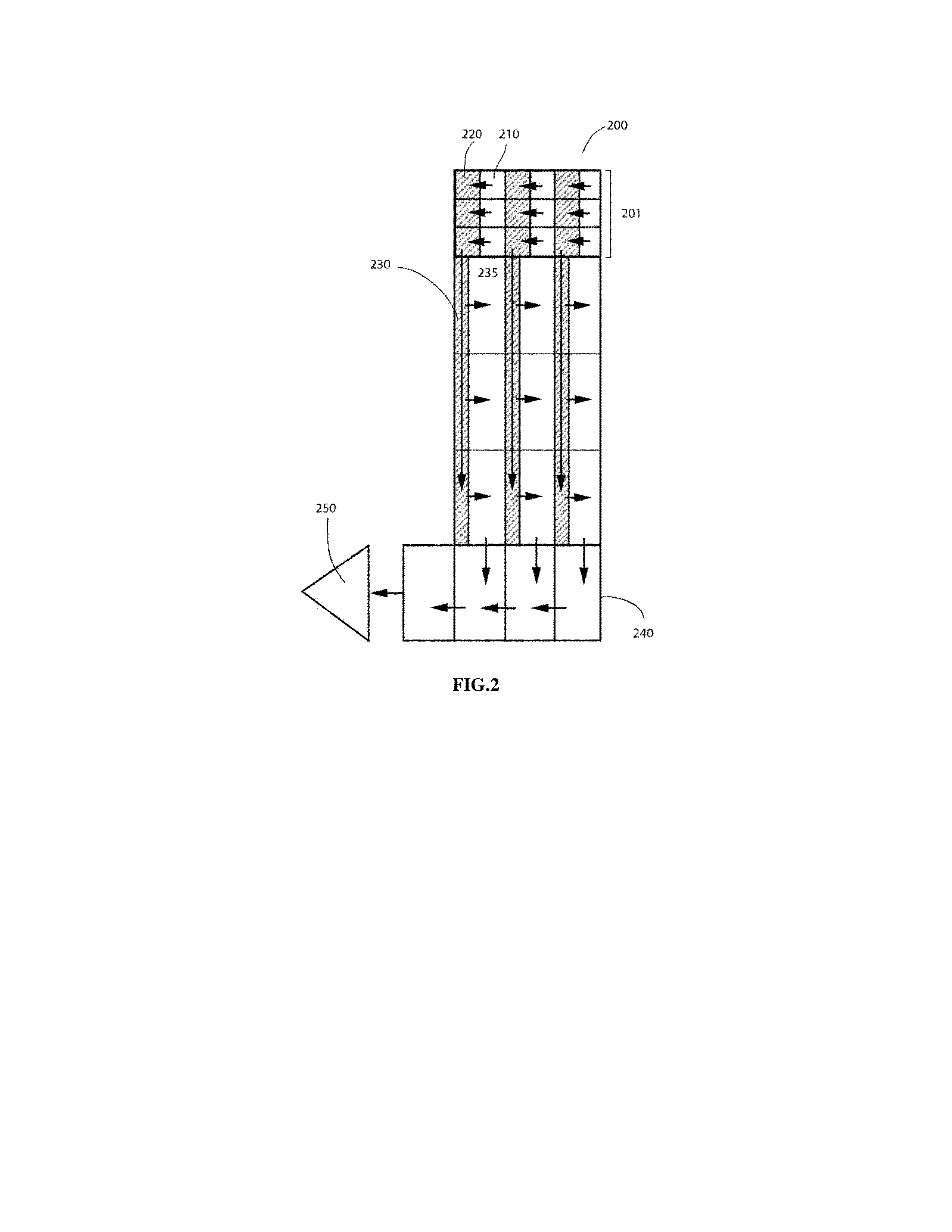Ccd accumulating charges outside the image frame
a technology of accumulating charges and images, applied in the field of ccd acc, can solve the problems of low dynamic range, low noise high dynamic range images in scientific and professional photography, small pixels with small full well capacity, etc., and achieve the effect of decoupling pixel size, high dynamic range, and low nois
- Summary
- Abstract
- Description
- Claims
- Application Information
AI Technical Summary
Benefits of technology
Problems solved by technology
Method used
Image
Examples
first embodiment
[0025]The first embodiment of this invention is based on modifications made to the prior art Frame Interline Transfer CCD described above. Referring to FIG. 2, the basic structure and functionality of the first embodiment 200 is shown. The image capturing frame 201 consists of two types of pixels: Light sensitive pixels (photodiodes) 210, and shielded pixels 220. Shielded pixels have the same charge holding capacity as the photodiodes. Shielded pixels are arranged into columns that will be called vertical shift registers. Immediately below the image capturing frame 201 there is a shielded storage frame comprising the same number of pixels as in 201. The structure of said frame is conceptually a duplicate of 201, only photodiodes are replaced with pixels capable of storing larger amounts of charge. Those pixels are called complementary pixels. Typically, a way to increase storage capacity of a pixel is by making the pixel bigger. One of the complementary pixels is represented as 235....
second embodiment
[0033]Referring to FIG. 3, the second embodiment of this invention is a CCD represented in two different phases of operation, 300a and 300b. This CCD is useful when the observed object changes slowly. The structure of this CCD is the same as in the first embodiment, except for the shielded storage frame, in which the complementary registers and the transfer of charges is implemented differently. The way in which the transfer of charges is realized in the shielded storage frame of this CCD allows that with a storage frame of the same size as in FIG. 2, two times higher dynamic range is achieved compared to FIG. 2. This is accomplished essentially by making the complementary storage registers two times bigger and running the whole process two times, as will be described next.
[0034]Before image capturing is started, all pixels are reset to zero. The functioning of the second embodiment can be presented considering three main steps.
[0035]In the first step charges created in all photodio...
third embodiment
[0042]This embodiment is useful when the observed object changes slow. Referring to FIG. 4, the third embodiment of this invention is a CCD represented in two different phases of operation, 400a and 400b. The structure of this CCD is the same as in the first embodiment, except for the larger size of the complementary registers, and the implementation of the transfer of charges from the shielded vertical registers of the image frame to the striped vertical registers of the storage frame. The way the transfer of charges from the image frame to the storage frame is realized in this CCD allows that with a storage frame of the same size as in FIG. 2, twice as high dynamic range is achieved compared to the first embodiment in FIG. 2.
[0043]Before image capturing is started, all pixels are reset to zero. The functioning of the third embodiment can be presented considering three main steps.
[0044]In the first step charges created in all photodiodes are transferred individually to the shielded...
PUM
 Login to View More
Login to View More Abstract
Description
Claims
Application Information
 Login to View More
Login to View More - R&D
- Intellectual Property
- Life Sciences
- Materials
- Tech Scout
- Unparalleled Data Quality
- Higher Quality Content
- 60% Fewer Hallucinations
Browse by: Latest US Patents, China's latest patents, Technical Efficacy Thesaurus, Application Domain, Technology Topic, Popular Technical Reports.
© 2025 PatSnap. All rights reserved.Legal|Privacy policy|Modern Slavery Act Transparency Statement|Sitemap|About US| Contact US: help@patsnap.com



